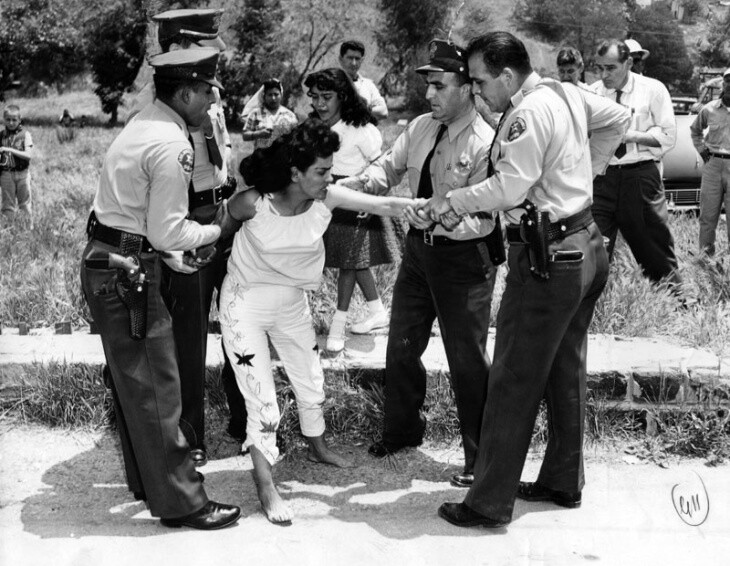With our free press under threat and federal funding for public media gone, your support matters more than ever. Help keep the LAist newsroom strong, become a monthly member or increase your support today.
The Unaffordability of Some Low-Cost Housing

I hope you are all weathering this latest storm. Stay safe out there, Los Angeles.
There are few greater pains than checking out Zillow and every other rental app to search for an affordable place to live in Los Angeles. If you do your research on how much you should spend on housing, most sources agree it should be no more than 30% of your gross monthly income.
Inside the federal government's Low-Income Housing Tax Credit program
About How to LA Newsletter
This is the web version of our How To LA newsletter. Sign up here to get this newsletter sent to your inbox each weekday morning
Trying to find housing that fits that threshold has become harder and harder to do in many cities across the nation — Los Angeles being one of the more difficult spots, even for middle-class individuals.
Even apartments built using federal government funds to serve low-income people are not affordable. LAist requested a special analysis of local housing data from the Department of Housing and Urban Development and it shows that some people granted affordable housing weren’t actually given housing that fits into that 30% affordability standard.
Simply put, the people with the most financial needs can’t afford their rent in some cases.
For months, reporter Ted Rohrlich investigated the Low-Income Housing Tax Credit program. In the first article of his four-part series, Ted wrote about how the tax credit program was supposed to be the federal government’s largest attempt to create housing for low-income households … and that it did. It created or rehabilitated more than 3 million apartments nationwide — 50,000 of them in the city of L.A. But still, some are simply not affordable.
Read Ted’s deep dive into this affordable housing crisis here.
As always, stay happy and healthy, folks. There’s more news below — just keep reading.
More news
(After you stop hitting snooze)
- As you can clearly see (and feel) the latest atmospheric river is in full display, my friends. There’ve been flood watches and warnings in some areas. My colleagues Jacob Margolis and Gillian Morán Pérez gave us the lowdown on all the rain we should expect with our latest storm.
- The L.A. District Attorney is filing charges against a chain of assisted-care centers for elder endangerment after 14 people died, including one staffer, due to COVID-19 that the DA called one of the “worst outbreaks” in such a facility.
- President Joe Biden signed an executive order to reduce gun violence at a local boys and girls club at Monterey Park on Wednesday. Some of his administration’s plans include increasing the number of background checks before someone can buy a gun and expediting the application of the Bipartisan Safer Communities Act.
- Medical researchers have found that some medications legally purchased in Mexico were laced with lethal fentanyl and methamphetamine. U.S. travelers who seek to buy pills and medicine that is less expensive in Mexico are at risk.
- Do you still need to file your taxes? Here’s a tip: You don’t have to pay to file. NPR’s Marielle Segarra has more things you should know this year when you file your taxes.
- Yesterday was Equal Pay Day, but the pay gap has hardly progressed in 20 years. Here’s why.
*At LAist we will always bring you the news freely, but occasionally we do include links to other publications that may be behind a paywall. Thank you for understanding!
Wait... one more thing
Sure, you know about Dodger Stadium. But what do you know about Chavez Ravine?

This L.A. history story was a shock to my system. I have to admit that I didn’t know much about the history of Chavez Ravine before reading Elina Shatkin’s story about this community.
Let’s hop in the history car to where the Dodger Stadium now sits. We’re going back to a time between the 1900s and the 1940s to visit the Mexican American families that lived in these hills. We’ll see children playing, a wedding and people just living their lives.
These families, segregated to certain areas of Los Angeles because of their Mexican heritage, found community here.
That is, until the Los Angeles city officials saw it as prime real-estate and a place that needed to be rebuilt as public housing. So what did they do?
They pressured families to sell their homes. When people refused, they were forced out — in some cases violently.
Also, that promised housing project never happened. Construction for Dodger Stadium started where those families lived on September 17, 1959.
Read more about Chavez Ravine here.
Help Us Cover Your Community
Got something you’ve always wanted to know about Southern California and the people who call it home? Is there an issue you want us to cover? Ask us anything.
Have a tip about news on which we should dig deeper? Let us know.







